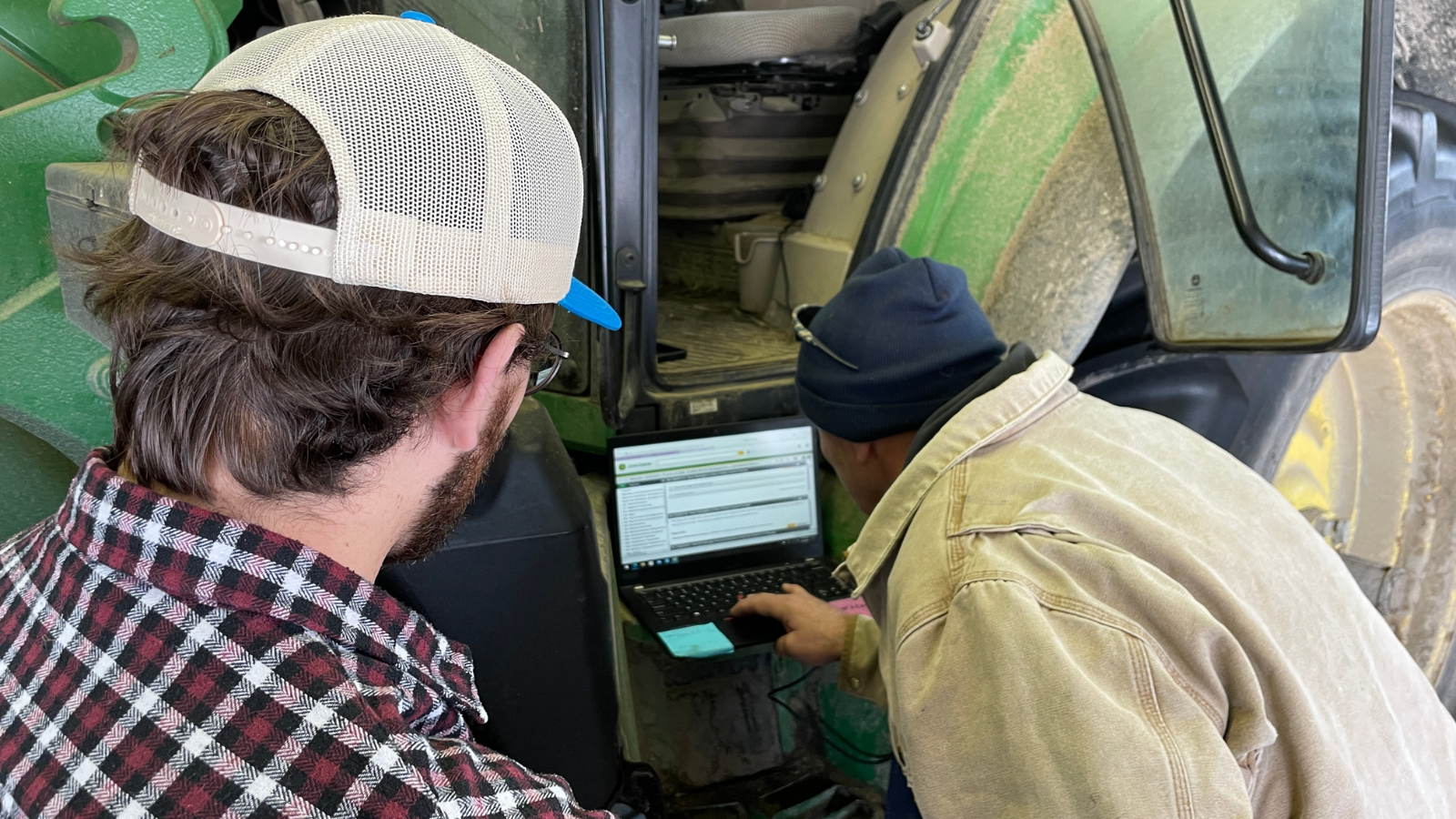
Chain Reaction III
How Top Restaurants Rate on Reducing Use of Antibiotics in Their Meat Supply
The third annual Chain Reaction report, which grades companies on their antibiotics policies and practices, found that 14 out of the top 25 restaurants in the U.S. have taken steps to restrict the routine use of antibiotics in the production of the chicken they serve, up from nine just one year ago. While restaurant chains made great progress on chicken, the groups who authored the report found that there were no new commitments to limit antibiotic use in beef and pork.
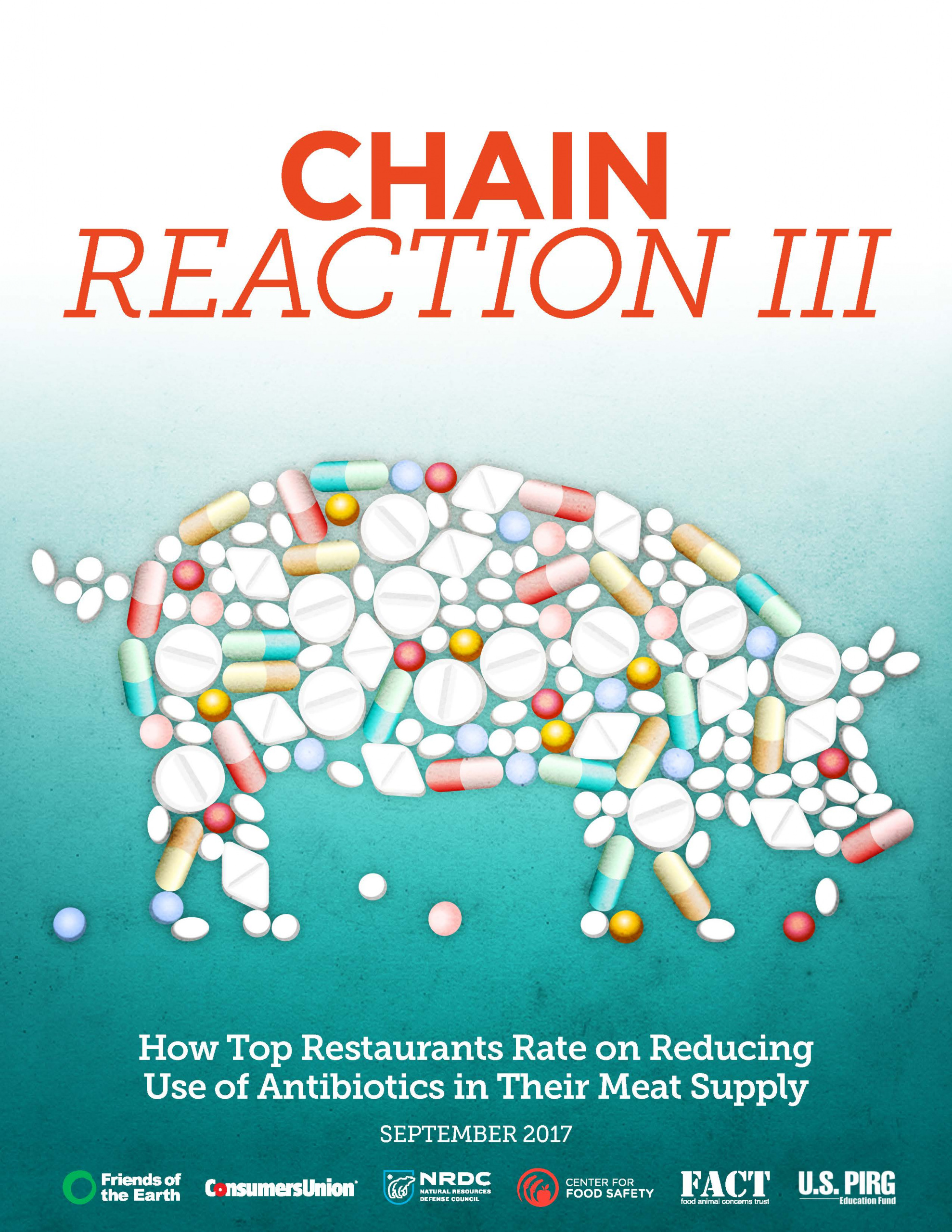
Downloads
Executive Summary
Background
The declining ability of antibiotics to cure diseases they once easily vanquished is a growing public health crisis. The Centers for Disease Control and Prevention states that already, at least 23,000 people die annually from antibiotic-resistant infections, and the toll is likely to rise.1
To combat this trend and preserve the effectiveness of antibiotics, we must use them less, so that bacteria have less chance to develop immunity to them. Doctors and hospitals must use antibiotics more judiciously. However, some 70 percent of all medically important antibiotics2 sold in the United States are intended for use not in human medicine, but in animal agriculture.3 We must also drastically reduce use in animals, where antibiotics are often used to promote growth and prevent disease in industrial farming conditions.
The nation’s fast food restaurant chains are in a unique position to address the antibiotic resistance crisis. Fast food chains are huge buyers of meat and poultry. A quarter of all chicken produced in the United States is sold through fast food restaurants, according to the National Chicken Council,4 and McDonald’s has been cited in the media as the largest buyer of beef in the United States.5 Fast food restaurants can demand that their suppliers reduce or eliminate antibiotic use in the production of the meat and poultry they purchase.
A coalition of organizations, including Consumers Union, Center for Food Safety, Food Animals Concerns Trust, Friends of the Earth, Natural Resources Defense Council and U.S. Public Interest Research Group Education Fund, have called on the nation’s largest fast food and fast casual restaurant chains to adopt policies limiting antibiotic use in their supply chains. This third annual Chain Reaction Report assesses the restaurants’ progress.
Survey and Scorecard Results
The 2017 Chain Reaction III Report and Scorecard ranks America’s 25 largest fast food and fast casual restaurant chains on their antibiotics policies.6 The goal of this effort is to help consumers make educated choices about the meat they eat, and encourage the largest chains in these industries to improve their sourcing policies.
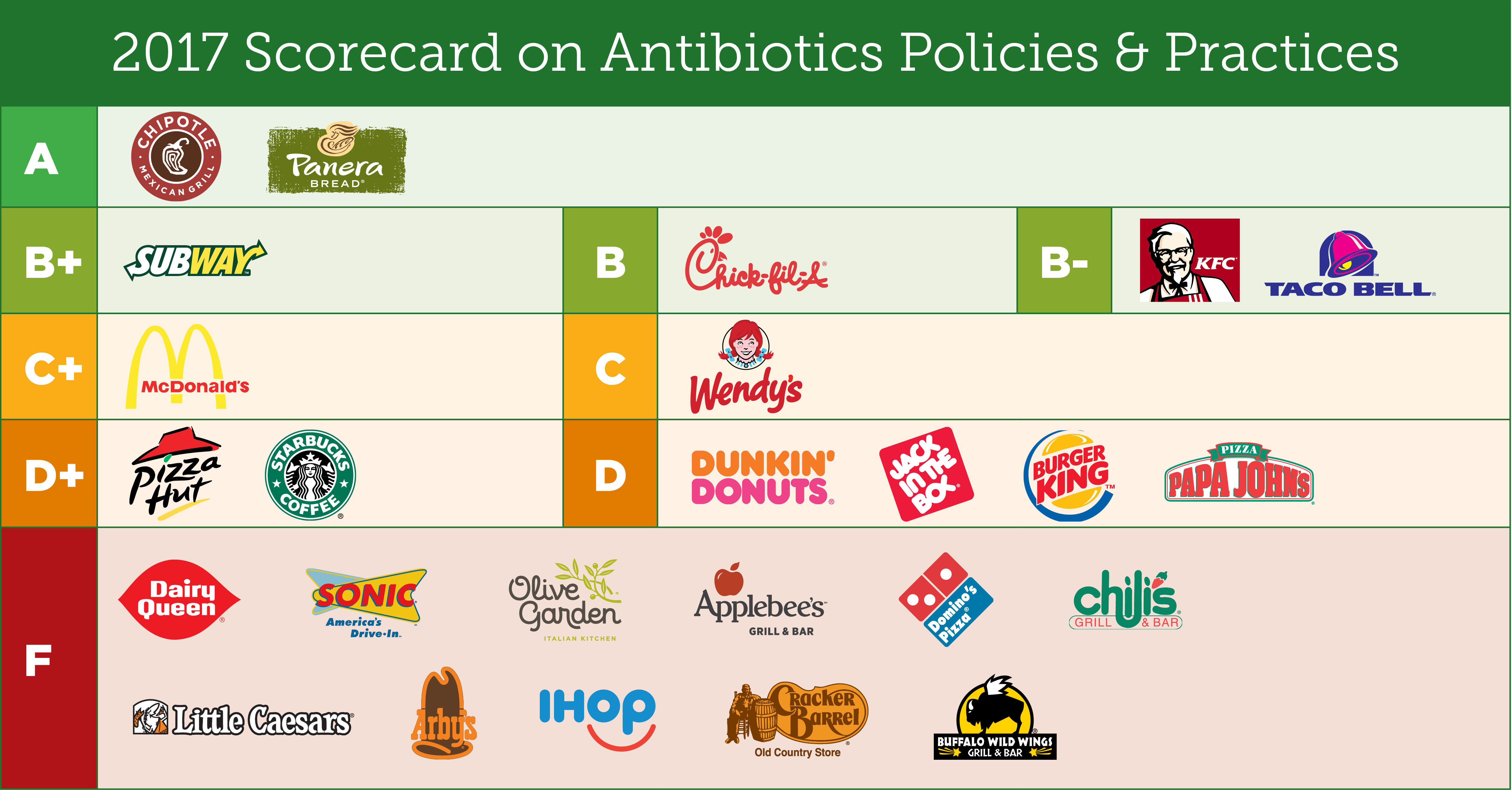
Our 2017 survey results indicate that increasingly, fast food companies are seeking to address the antibiotic resistance public health crisis by mandating changes in their supply chain. Fourteen of the top 25 companies, a clear majority, have taken at least some steps to limit use of antibiotics in all or some of their supply chains. These fourteen, accounting for two-thirds of all fast food industry revenue,7 received passing grades, up from nine last year and five the year before.8 The five companies that made a commitment for the first time this year are KFC, Burger King, Starbucks, Dunkin’ Donuts and Jack in the Box.
It is important to note, however, that while remarkable progress has been made to reduce or even eliminate use of medically important antibiotics, this progress has largely occurred in chicken production. With a few exceptions, companies have made little progress in reducing the use of antibiotics in their pork and beef supplies. Only two companies, Chipotle and Panera, currently serve pork and beef, as well as poultry, raised without antibiotics. Both Chipotle and Panera continue to earn an “A” grade in the Scorecard for their exemplary policies and practices with respect to antibiotic use. Subway has adopted a policy that addresses antibiotic use in meat as well as poultry, but implementation in pork and beef is on a long timeline, earning it a “B+.”
KFC improved the most over last year, earning a “B-” compared to last year’s “F”, as a result of making a commitment to transition its entire product line, all chicken, to being raised without antibiotics important in human medicine by the end of 2018.
Chick-fil-A, Taco Bell, and Wendy’s have also progressed in implementing their antibiotics commitments in chicken, earning grades in the “B” and “C” range.
McDonald’s earned a “C+” this year, the same grade as in 2016, when it announced that all the chicken it served in the U.S. was raised without medically important antibiotics. It made no new commitments on beef or pork, however. In August 2017 McDonald’s published a new “Vision on Antibiotic Stewardship” document that established ambitious goals for limiting use of medically important antibiotics in its entire global supply chain for all of its meats. But timebound policies for pork and beef have not been established under this new vision.
One company, Pizza Hut, received a “D+” grade because it made a token effort, i.e., setting good antibiotics use policies on chicken, and implementing them, but applying them only to a small fraction of its chicken purchases. Starbucks, which made a timebound commitment for poultry, but not for beef and pork, also earned a D+. Three more major chains—Burger King, Jack in the Box, and Dunkin’ Donuts—adopted new policies limiting use of either medically important or all antibiotics in chicken for the first time this year. But they lacked implementation, transparency commitments and/ or timebound commitments for beef and pork, earning them “D”s. Papa John’s adopted a good policy, but it only applies to a portion of its chicken and is not verified by an independent auditor, so it also received a “D.”
Unfortunately, 11 of the top 25 fast food chains, including several “fast casual” restaurants like Olive Garden and Applebee’s, have taken no discernible action to reduce use of antibiotics in their supply chains. These companies, some under shareholder pressure for their lack of action, received an “F.”
No doubt, the public calls to action aimed at Subway, KFC and its parent company Yum! Brands, and others initiated by the organizations participating in this report and our allies, coupled with action by the investor community, are making a difference (see section on Market Trends). Companies are on notice that their customers and shareholders will hold them accountable for antibiotic use practices in their meat and poultry supply chains. Nonetheless, much swifter and more widespread action is needed from top restaurant chains and leading meat producers to end routine antibiotic use in our meat supply.9
In the long run, changes in the fast food marketplace alone will not stem the rising tide of antibiotic resistance. Ensuring consumers have more choice when it comes to purchasing meat and poultry raised without routine antibiotics use will not sufficiently address the broader risk of resistance from continued misuse of antibiotics in much of the meat industry. For that, we need government to set rules across the industry that prohibit the routine use of antibiotics in food animal production for growth promotion and disease prevention purposes, and set baseline standards that limit acceptable use to treatment of sick animals and to control a verified disease outbreak. (See Recommendations section). To date, government response to this major public health threat has been woefully inadequate.
Endnotes
1. U.S. Department of Health and Human Services, Centers for Disease Control and Prevention, “Antibiotic Resistance Threats in the United States, 2013” https://www.cdc.gov/drugresistance/threat-report-2013/pdf/ar-threats-2013-508.pdf#page=6
2. ‘Medically important antibiotics’ or ‘antibiotics important to human medicine’ refers to antibiotics that are the same as, or similar to, classes of drugs used in human medicine. For example, the antibiotic tylosin, used in livestock, is a member of the medically important macrolide class of antibiotics.
3. Calculated from the following: Human use of antibiotics in 2011: 3,289,176 kg (see Table 1, pg. 5 in https://www.fda.gov/downloads/Drugs/DrugSafety/InformationbyDrugClass/UCM319435.pdf) Animal use for medically important antibiotics in 2011: 8,255,697 kg (see Table 10, pg 42 in https://www.fda.gov/downloads/ForIndustry/UserFees/AnimalDrugUserFeeActADUFA/UCM476258.pdf)
4. National Chicken Council, “Domestic Market Segments,” accessed August 24, 2017 http://www.nationalchickencouncil.org/about-the-industry/statistics/domestic-market-segments/
5. Bomkamp, S., “McDonalds, fast-food chains find antibiotic-free beef, pork hard to deliver,” Chicago Tribune, April 18, 2017, http://www.chicagotribune.com/business/ct-mcdonalds-kfc-antibiotics-0418-biz-20170417-story.html
6. Appendix 2 describes the scoring and grading methodology for this Scorecard.
7. Calculated from: Franchise Help, “Fast Food Industry Analysis 2017 – Cost & Trends,” accessed August 24, 2017 https://www.franchisehelp.com/industry-reports/fast-food-industry-report/
8. Chain Reaction (2015), http://webiva-downton.s3.amazonaws.com/877/d8/f/6472/FOE_ChainReactionReport.pdf Chain Reaction II (2016), http://webiva-downton.s3.amazonaws.com/877/d7/a/9142/1/NRDC_ChainReaction2_Report.pdf
9. “Routine antibiotic use” means use for growth promotion and/or in a regular or repeated pattern for disease prevention.
Topics
Find Out More

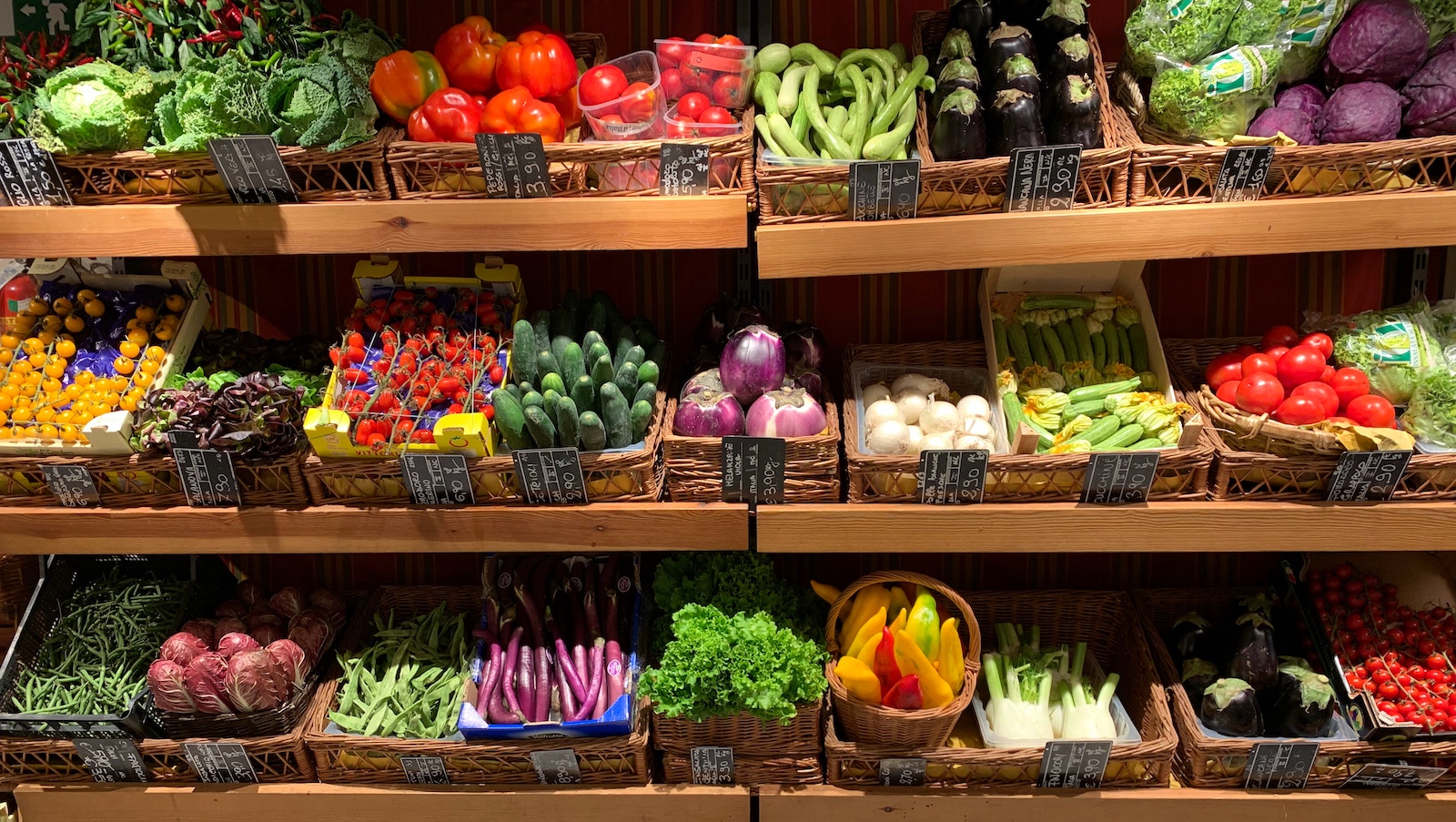
Food for Thought Part 2: An analysis of food recalls for 2022
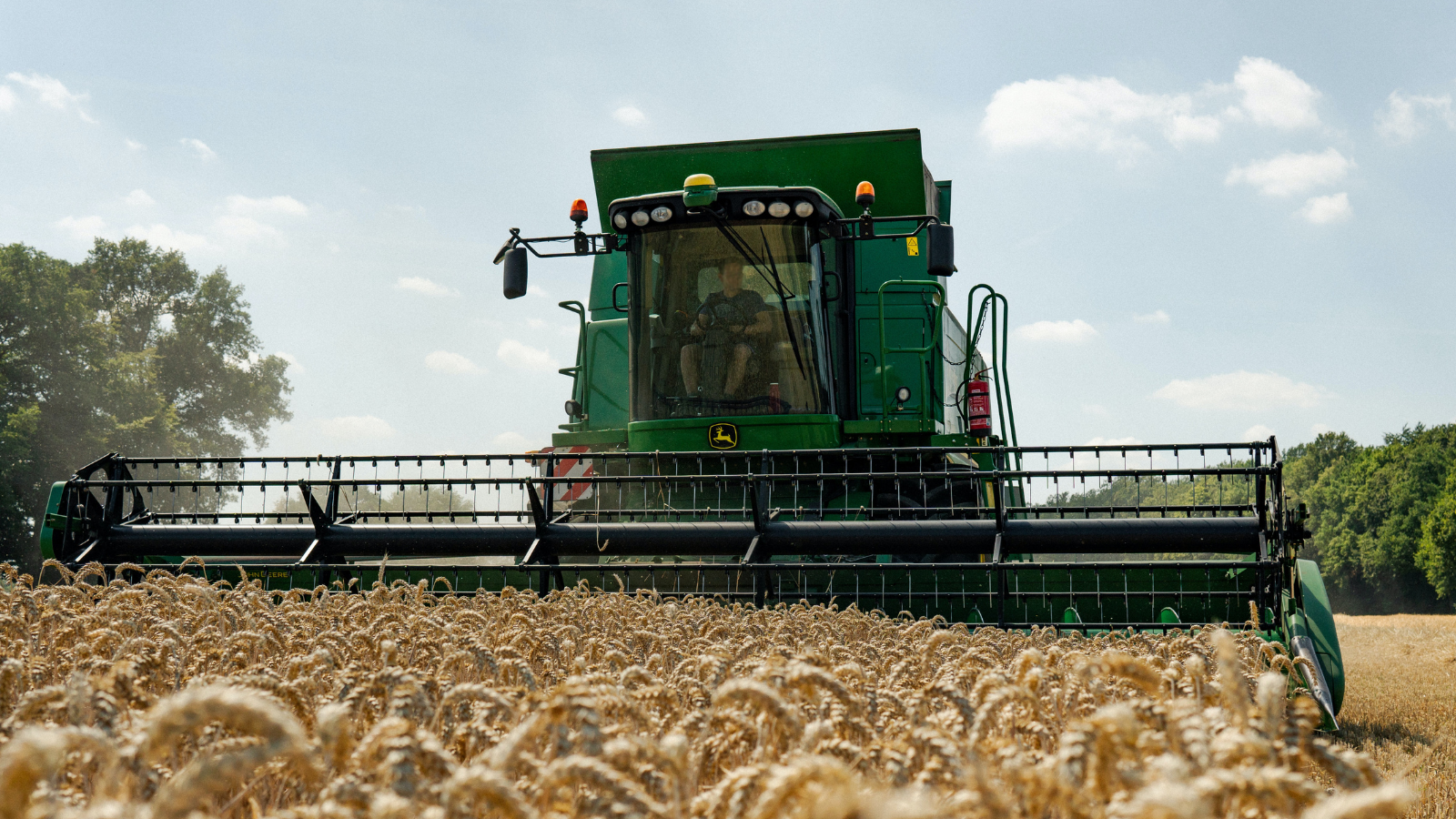
Out to Pasture
